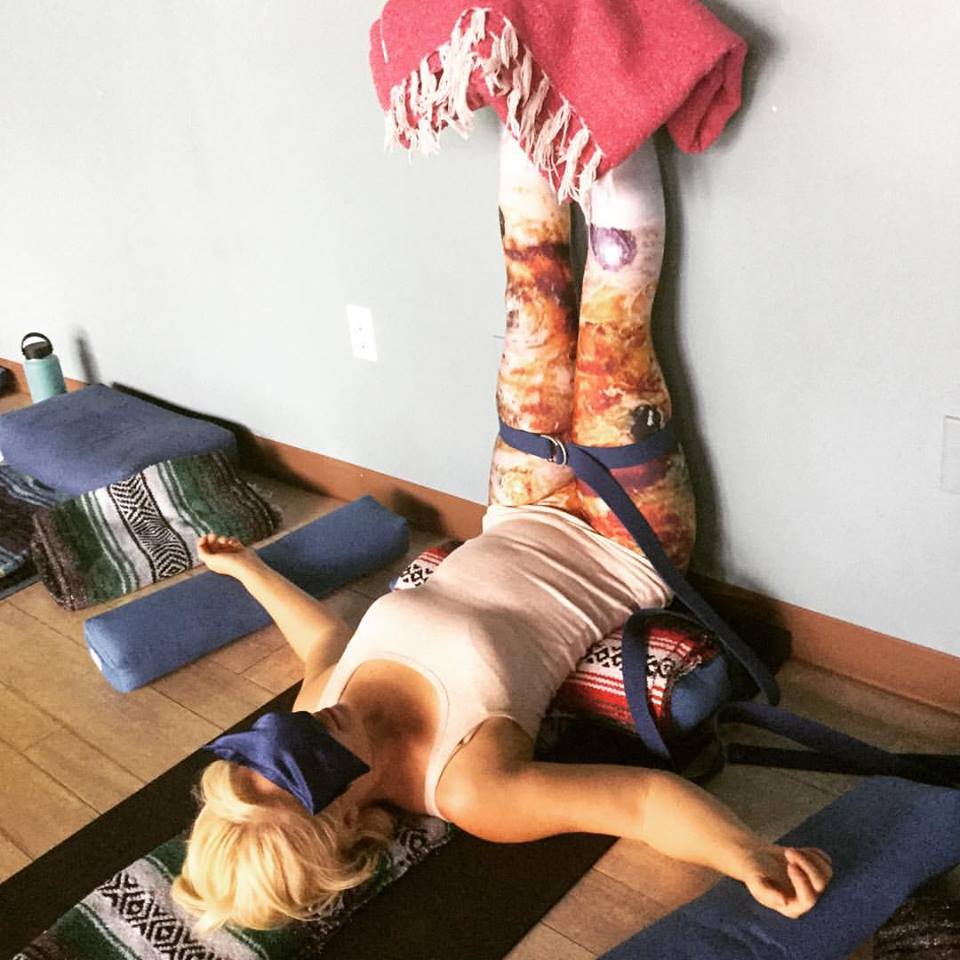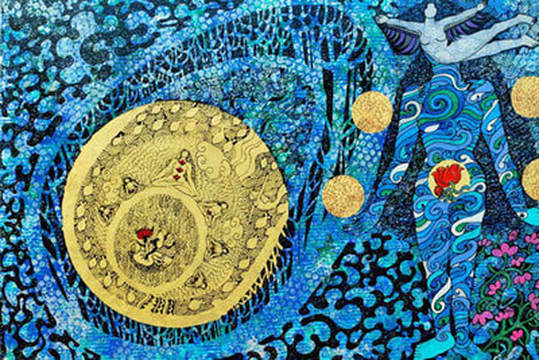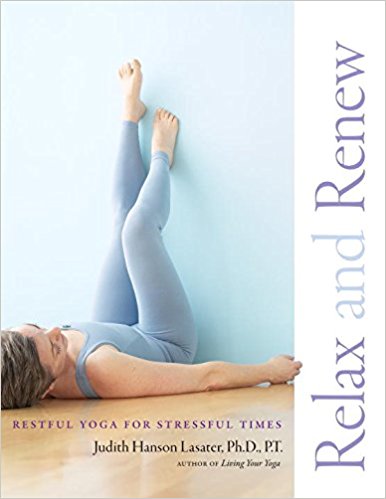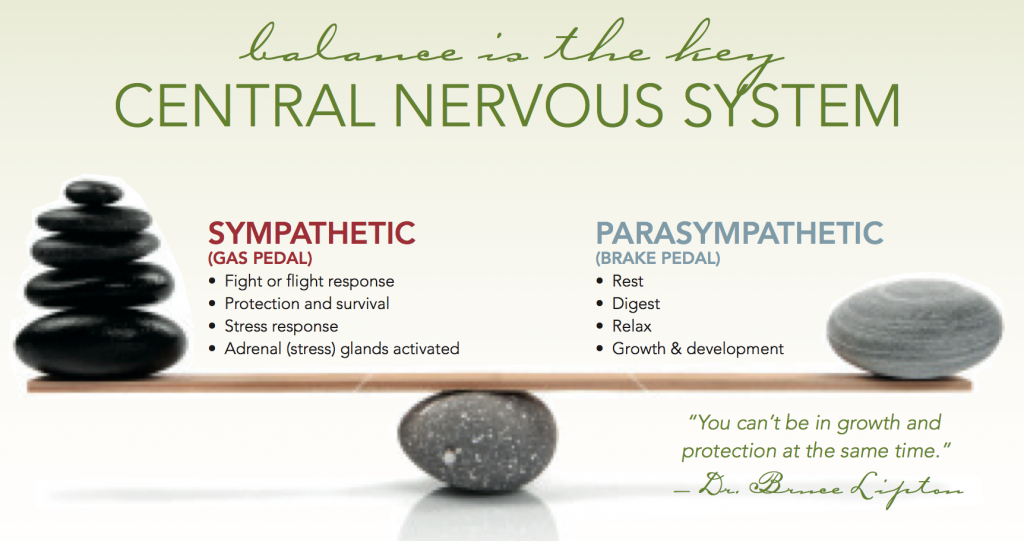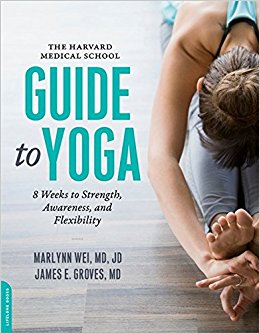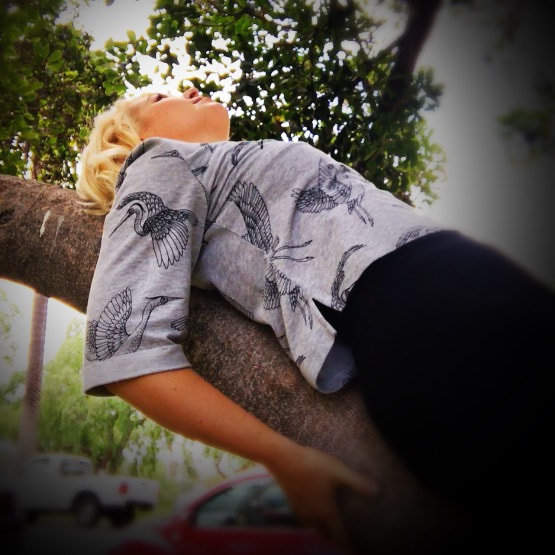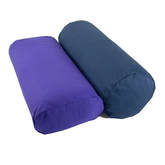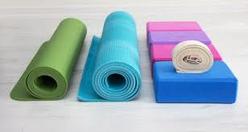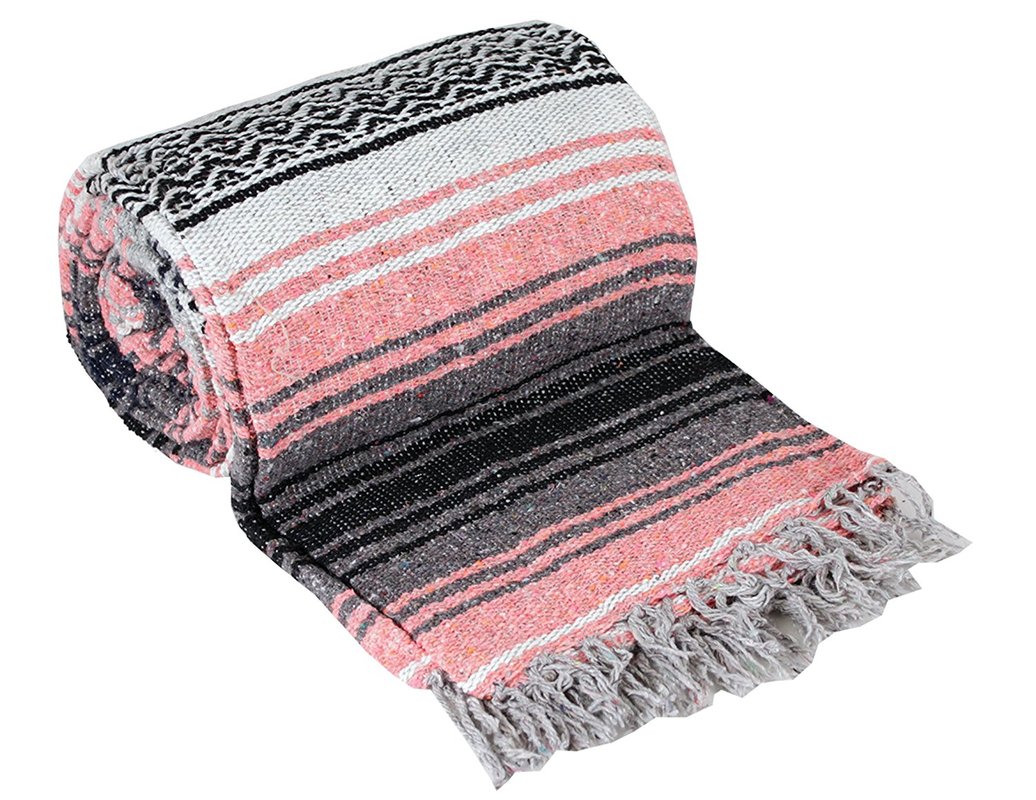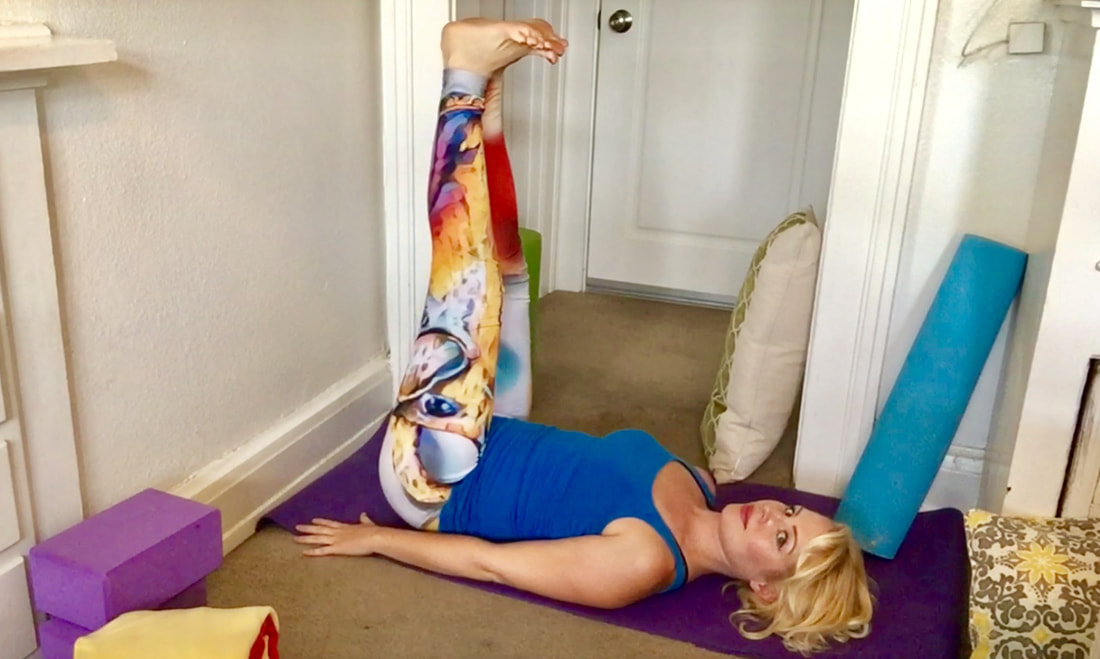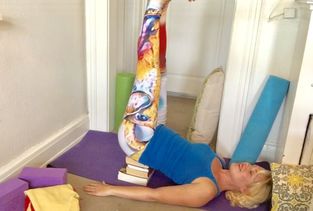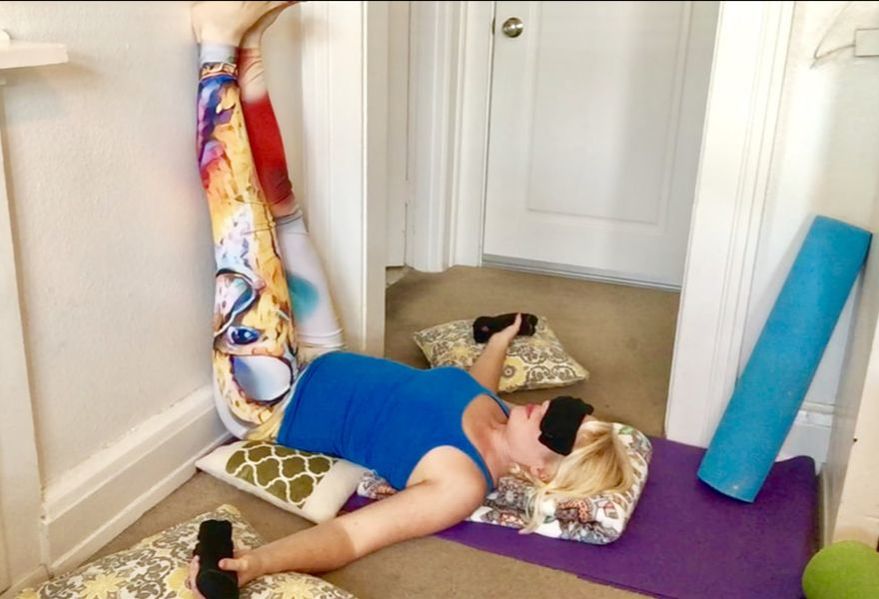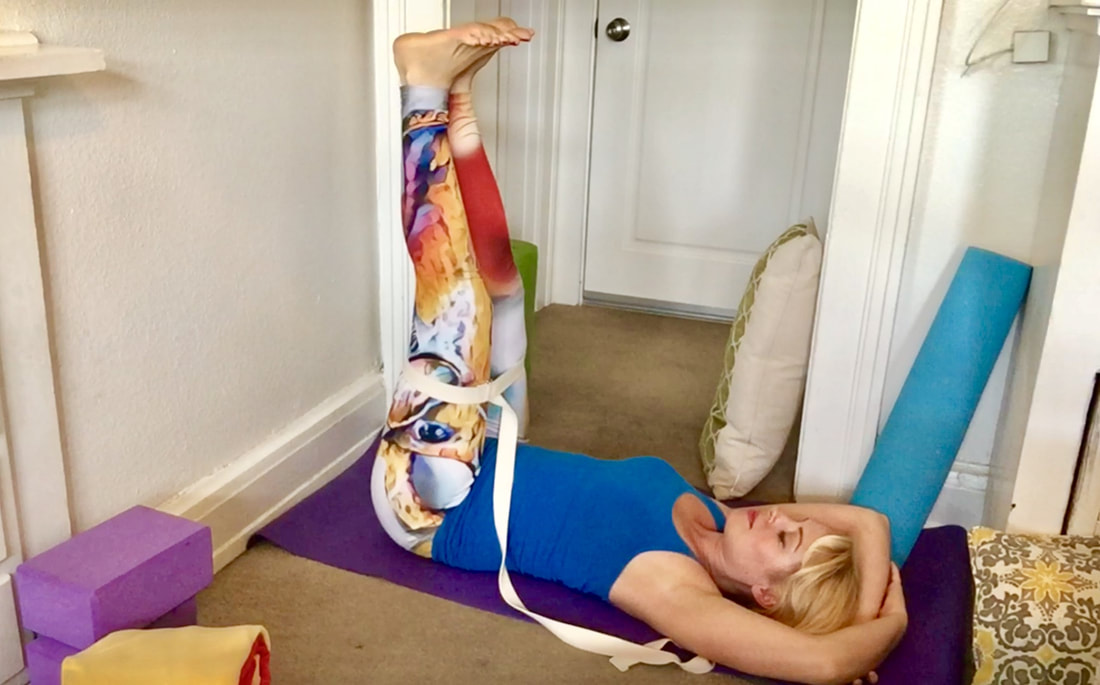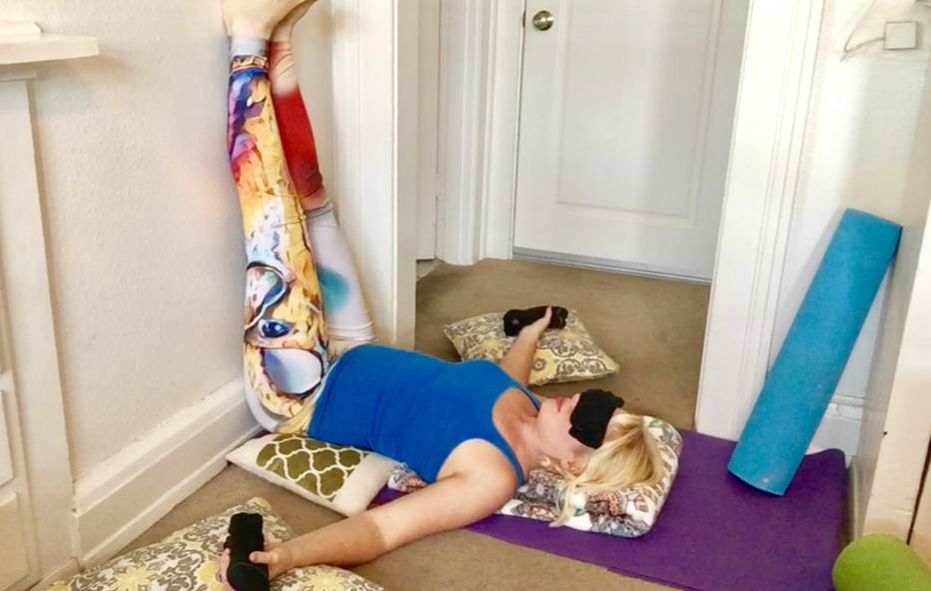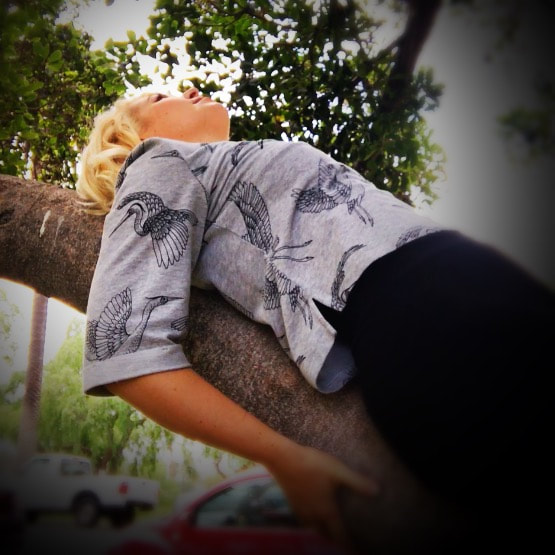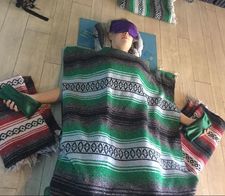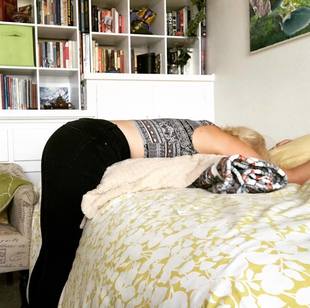After a long day on my feet, the first thing I want to do is to rest them. Whether I’m trekking 10-20 miles a day with a heavy backpack, teaching, serving tables at a restaurant, or even sitting and writing, my body craves relaxing restoration. My favorite pose to recover and heal from a long day is Legs-Up-The-Wall and it can be practiced almost anywhere that you have access to wall and enough space to lay your back down against the corner. You can add blocks, blankets and bolsters to feel more supported and increase your energy through a back-bend, but the basic posture itself does miracles inside of our bodies.
Legs-Up-The-Wall, also known as Viparita Karani in Sanskrit, is an inversion that increases circulation flow (lowering blood pressure if practiced regularly), grounds the head, and quiets the brain for deep relaxation. This pose can stimulate the legs, refresh the heart and lungs, relieve the back and harmonize the thyroid and parathyroid. This pose changes the energy of the legs from moving down and out to the feet, as in our normal stance, to moving down and back to the pelvis (Relax and Renew by Judith Lascetor). This pose can also be useful to relieve headaches, stress, and insomnia.
Ancient yoga philosopher Pantajali believes that, Restorative Yoga is the
“Great golden womb of the Universe.”
Photo Credit: Times of India
To find the most support and grounding for your body in the moment, you can experiment with different props. According to Judith Lasater Restorative Yoga is, “The use of props to support the body to create deep states of relaxation, health and ease.” We are encouraged to support any part of the body that can be supported (even our wrists, neck, and head) so that we can feel like we are being held with our body in flexion, as inside the womb.
Practicing Restorative Yoga is the antidote to our fast-paced busy society.
However, the goal of practicing restorative yoga is NOT just to DO restorative poses when we feel that certain parts of our body need healing, but instead to carry the peaceful restorative awareness to our whole lives.
Did you know that our bodies have two different nervous systems?
One is more dominant than the other. According to Harvard Medical School Guide to Yoga, “Each network has an intricate, interconnected network of nerves running between our brain and organs and communicates through a variety of neurotransmitters, which further signal different chemicals to be released in our blood to change the organ functions.” These chemicals also regulate the pace of our breathing, and our heart rate.
The sympathetic nervous system keeps us active in a “fight or flight” survival mode in which we are often busy in our mind and body. We can all relate to that feeling of sweat and butterflies before we are about to make a speech, performance, or other uncomfortable confrontation. We can also experience this survival alert in the midst of a physical disaster. However, in today’s society, we often get so pumped up on caffeine, sugar, or crammed schedules that we stay in a state of alert for much of our daily routine and week. We keep checking our phones or Facebook and try to multitask as our heart-rate rises, vision narrows, and sweat forms. This system can be associated with our ego and how it relates to wanting more and more in the material world, never stopping or getting enough.
One is more dominant than the other. According to Harvard Medical School Guide to Yoga, “Each network has an intricate, interconnected network of nerves running between our brain and organs and communicates through a variety of neurotransmitters, which further signal different chemicals to be released in our blood to change the organ functions.” These chemicals also regulate the pace of our breathing, and our heart rate.
The sympathetic nervous system keeps us active in a “fight or flight” survival mode in which we are often busy in our mind and body. We can all relate to that feeling of sweat and butterflies before we are about to make a speech, performance, or other uncomfortable confrontation. We can also experience this survival alert in the midst of a physical disaster. However, in today’s society, we often get so pumped up on caffeine, sugar, or crammed schedules that we stay in a state of alert for much of our daily routine and week. We keep checking our phones or Facebook and try to multitask as our heart-rate rises, vision narrows, and sweat forms. This system can be associated with our ego and how it relates to wanting more and more in the material world, never stopping or getting enough.
Further, when we are stressed for days and weeks at a time, without giving our parasympathetic system a chance to take over, this can lead to anxiety, emotional fragility, and getting sick through a weakened immune system. “Stress and stress related problems account for up to 90 percent of why people go to see their doctor…Astonishingly, few doctors (only three percent) talk to their patients about how to reduce stress in their everyday lives.” Both our body and our mind can suffer from this chronic stress. Learn more about the scientific details about how stress affects our health and how yoga repairs, along with an 8-Week Guide to Strength, Awareness, and Flexibility in the book by Dr. Marylynn Wei and Dr. James E. Groves, The Harvard Medical School Guide to Yoga.
On the other hand, our parasympathetic system is slow and growth based. It is often associated with digestion, absorption of nutrients, and strengthening our immune and reproductive systems. Restorative Yoga stops the negative cycle of stress by turning on your body’s relaxation response, a state of deep rest by the counter stress, parasympathetic nervous system. This is the state in which we can listen to our inner voice of awareness and consciousness, peace and stillness. This system releases chemicals to relax your muscles and slow your breathing. In addition, restorative yoga has been linked with loss of long-term body fat and weight loss that is maintained over time. The more you practice, the more you will reach this relaxed state.
Legs-Up-The-Wall with Variations of Props
To set up for Legs-Up-the-Wall pose, you have the option to create a bolster. A bolster is a firm pillow, cushion or pad used for support. You can also use a block, rolled up yoga mat, a rolled mat wrapped in a blanket, or a rolled up blanket or sweatshirt wrapped around a few books (if you are traveling). You can place this bolster parallel to the wall with a few inches of space in between. For extra support you have the option to have cushions ready on each side of your yoga mat (or whatever surface floor), a looped strap, eye pillow and two beanbags, and a blanket or two.
The simplest most minimal way to practice this posture, if you are in an open space without any props or nearby wall, you can lay on your back and lift your legs straight up in the air, making a right angle with your body. If you have only one block, or a stack of books, you can practice this pose by starting in supported bridge, with a block placed on the low or medium height, then lifting your legs straight up to the sky.
To get into the pose with props, sit parallel on the bolster or on the floor (or bed) to the wall. Your shoulder and thigh should be touching the wall. As you lean back to a perpendicular position, swing your feet up. Try to bring your body to 90 degrees with your sit bones touching the wall, but arrange the bolster so that it is not touching your lower ribs. If this is uncomfortable on your lower back or hamstrings, scoot a few to twelve inches off of the wall, or add extra padding under your lower back by pressing your feet into the wall and lifting your hips, then sliding a cushion or folded blanket underneath. If you already have a bolster under your hips, you have the option to push it out to the side and try the pose without it.
Next, you have the option to place a looped strap around your thighs and tighten it so that your legs are parralell and lifting straight up. This requires less effort to try to keep your legs straight up. If your legs go numb at any point, bend your knees and swirl your ankles or bring your feet together into bound angle. Otherwise, keep your legs straight, but relaxed.
If your chin lifts towards the ceiling, place a standard-fold blanket under your head and neck to support your cervical curve, so that your chin is slightly lower than your forehead. Relax your neck, head and back on the ground.
Relax your shoulders away from your ears and draw your shoulder blades together and away from your head. Relax your arms either above your head or alongside your torso about 45 degrees away, palms up. Option to rest your hands on cushions (perpendicular to your forearms) in a flexion position with bean bags to rest your fingers on. You can cover your eyes with an eye pillow or sleeve of a sweatshirt to shut out the busy activity associated with light.
Relax your shoulders away from your ears and draw your shoulder blades together and away from your head. Relax your arms either above your head or alongside your torso about 45 degrees away, palms up. Option to rest your hands on cushions (perpendicular to your forearms) in a flexion position with bean bags to rest your fingers on. You can cover your eyes with an eye pillow or sleeve of a sweatshirt to shut out the busy activity associated with light.
Settle in by taking a few deep breaths. Imagine the fluid in your legs flowing down and release your tension. Your legs begin to feel softer and lighter. Imagine that your brain is sinking towards the back of your head. Enjoy the open freedom in the position of your arms and feel your spine supported by the floor or bed.
Stay here for a minimum of 10 slow breaths or set a timer for five to twenty minutes. To get out of this pose, gently loosen your strap and let your knees bend and maybe open up to the sides in bound angle. Then, bringing your knees together, slowly lean to your side and let your eye pillow fall.
Use caution or avoid this pose if you have whiplash, spondyolisis, hiatal hernia, sciatica, high blood pressure, or like most inversions heavy menstruation, pregnant after first trimester, retinal issues, or glaucomaua.
While trekking the Camino de Santiago in Spain during the summer of 2014, JoAnna and I practiced this pose, after each day of walking, for at least 30 minutes.
Join us….for more restorative poses like Supported Half-Dog, Savasana, and much more on the Meditative Yoga Pilgrimage in the Summer of 2018.
Stay here for a minimum of 10 slow breaths or set a timer for five to twenty minutes. To get out of this pose, gently loosen your strap and let your knees bend and maybe open up to the sides in bound angle. Then, bringing your knees together, slowly lean to your side and let your eye pillow fall.
Use caution or avoid this pose if you have whiplash, spondyolisis, hiatal hernia, sciatica, high blood pressure, or like most inversions heavy menstruation, pregnant after first trimester, retinal issues, or glaucomaua.
While trekking the Camino de Santiago in Spain during the summer of 2014, JoAnna and I practiced this pose, after each day of walking, for at least 30 minutes.
Join us….for more restorative poses like Supported Half-Dog, Savasana, and much more on the Meditative Yoga Pilgrimage in the Summer of 2018.
